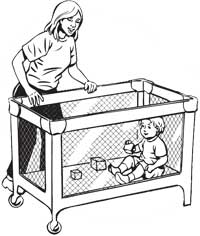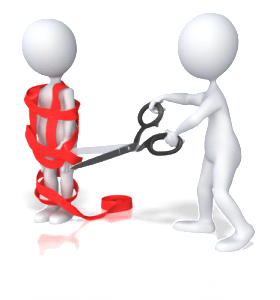
Dear CPSC Small Business Community,
In this post, please find a list of recent CPSC news, regulatory updates, and other activities that may be of interest to you.
Periodic Testing Requirements
On this Friday, February 8, 2013, a new regulation that requires the periodic testing of continuing production of children’s products becomes effective. The regulation is 16 CFR part 1107. We have posted some new information and FAQs at the following Web page:
http://www.cpsc.gov/periodic-testing NEW!
Please note that we are currently reorganizing the testing and certification pages during the transition to a new CPSC.gov website. Further updates, information, and FAQs about third party testing and certification will be coming soon.
CPSC.gov Website
You may have noticed that CPSC recently redesigned its website to provide a better user experience for stakeholders. With the migration to the new website, some users have reported difficulty finding certain resources. We appreciate your patience as we fix the new website’s nits and ask you to report problems at: http://www.cpsc.gov/cgibin/epifeedback.aspx.
Upcoming Presentations
New York, NY – Monday, February 11, 2013: General CPSIA Presentation
26 Federal Plaza, Downtown Manhattan, Conference Room A, 6th Floor, 2 pm
I will be speaking to any interested small business in the metropolitan New York City area this coming Monday. The presentation will be an overview of U.S. regulatory requirements for consumer products (including children’s products) and will also explain the requirements and benefits of registering as a small batch manufacturer with CPSC. The presentation will include a discussion of third party testing requirements, including periodic testing requirements.
The presentation is free and open to the public. Advance registration is requested (but not required) to ensure adequate seating. The presentation will take place in Conference Room A at the Federal Plaza Conference Center located at 26 Federal Plaza, which is at the southeast corner of Worth Street and Broadway in downtown Manhattan. Please allow approximately 30 minutes to get through security and arrive to the 6th floor. There also is a café on the 6th floor. You may contact me at ncohen@cpsc.gov with any questions and to RSVP.
New York, NY – Tuesday, February 12, 2013: Presentation on Third Party Testing
Jakob K. Javits Convention Center, Room 1E19, 10 am
I will be speaking to attendees at the New York International Toy Fair this coming Tuesday. The presentation was requested by the Toy Industry Association and addresses the U.S. third party testing requirements for toy manufacturers, including periodic testing requirements. CPSC Chairman Inez Tenenbaum will be the keynote speaker at 9 am.
You may also contact me at ncohen@cpsc.gov with any questions or to schedule a time to speak individually. More details about this presentation are available here: http://www2.toyassociation.org/AM/Template.cfm?Section=tf_Home&TEMPLATE=/CM/ContentDisplay.cfm&CONTENTID=18494.
Washington, DC – Thursday, February 28, 2013: Panel on Third Party Testing
Hyatt Regency Crystal City at Reagan National Airport, Room TBD, 1:45 pm; 3:30 pm
I will be moderating a panel for attendees on Day 3 (“CPSC Day”) of the International Consumer Product Health and Safety Organization (ICPHSO) conference. The panel will address third party testing, including the periodic testing requirements. More information, including the list of CPSC panelists, is available here: http://www.icphso.org/conference/2013annual/agenda.html.
Regulatory Update:
Newly proposed regulations are open for public comment and recently enacted regulations are set to go into effect. If you have never commented on a rule before, you can learn more about the rulemaking process and how you can add your comments to the proposed rule before it is finalized. Your comments are vital to ensuring that the Commission has as much information as possible as the Commissioners consider whether to finalize proposed rules into law.
New Regulations: Effective Dates for Compliance
Cribs – The crib standards went into effect for all new cribs sold on or after June 28, 2011. Child care providers, family child care homes, places of public accommodation (e.g. hotels), and crib rental companies were given until December 28, 2012 to ensure that their cribs comply with the new regulations. Please see our Crib Information Center for more information tailored to child care providers to enable you to determine if your cribs comply: www.cpsc.gov/cribs.
Play Yards –The new play yard regulation was published on August 29, 2012 and has an effective date of February 28, 2013. It is codified at 16 CFR Part 1221.
Infant Swings –The new infant swing regulation was published on November 7, 2012 and has an effective date of May 7, 2013. It is codified at 16 CFR Part 1223.
Reducing Third Party Testing Burdens – In October, the Commission voted to direct the CPSC staff to study possible options for reducing the burdens related to third party testing. Such studies would be subject to staff resource availability. The results and the Commissioners’ statements are available at: http://www.cpsc.gov/PageFiles/130209/3rdparty.pdf.
In January, the Commission voted to direct the staff to draft “Requests for Information” (RFIs) on four possible burden reduction options to be included in CPSC’s 2013 operating plan. The four areas about which the Commission will gather information concern: heavy metal content in certain materials, phthalates in certain materials, and lead content in synthetic food additives and adhesives used in manufactured woods. See the Commission’s action at: http://www.cpsc.gov/PageFiles/139100/2013operatingplan.pdf.
Representative Samples – On December 5, 2012, the Commission finalized its rule on ensuring the use of representative samples used in third party testing. The rule also has an effective date of February 8, 2013. You can learn more here.
Open For Public Comment (Selected items)
Hand-Held Infant Carriers – The Commission voted to publish a draft final rule for a new Safety Standard for Hand-Held Infant Carriers. The proposed rule was published December 10, 2012 and public comments are due by 11:59 pm on February 25, 2013. You can watch the staff presentation in archived format here and comment here.
Bedside Sleepers – After a recent staff briefing, the Commission voted to publish a draft final rule for a new Safety Standard for Bedside Sleepers. The proposed rule was published December 10, 2012 and public comments are due by 11:59 pm on February 25, 2013. You can watch the staff presentation in archived format here and comment here.
Comment Period Recently Closed
Bassinets and Cradles – The public comment period for a Supplemental Notice of Proposed Rulemaking for a Safety Standard for Bassinets and Cradles recently closed on January 2, 2013. The Commission staff is currently evaluating the comments received.
Make sure to get your products into compliance before the new regulations become effective, which has generally been about six months after the final regulations are published.
Small Batch Manufacturers:
PLEASE NOTE that if you were a registered small batch manufacturer with the U.S. Consumer Product Safety Commission (CPSC) for calendar year 2012 and you wish to continue in this status, you must register for calendar year 2013. Registration must be submitted annually. Registration is ongoing, and you may register at any time during this calendar year – through December 2013.
If you wish to register as a small batch manufacturer for calendar year 2013, your registration must be based upon the total number of product units sold and the total gross revenues from the sales of all consumer products in the previous calendar year – January 1, 2012 through December 31, 2012. If you meet these requirements, you may now register for calendar year 2013 by logging into your user account in the Business Portal at: www.SaferProducts.gov.
When you log in to your account at: www.SaferProducts.gov and you click the “Small Batch Manufacturer” tab with your cursor, you will be asked to attest that your company satisfies the criteria to register; the criteria are the same as last year and have only been updated to account for your company’s sales in calendar year 2012. Once you are certain that you can attest to the truth and accuracy of the statements for your sales in calendar year 2012, you may check the boxes and submit your registration. Within the next day or so, you will receive a confirmation e-mail message with your new, unique Small Batch Manufacturer Registration Number for 2013. *Please save that e-mail message for your reference.* If you do not yet know whether you will qualify as a small batch manufacturer based on sales through December 2012, please wait to register until you have full information regarding your sales numbers. Registration is ongoing, and you may register at any time during this calendar year – through December 2013.
Please note that when you log in to your account after your registration for calendar year 2013 is accepted, your Business Portal account will display your unique Small Batch Manufacturer Registration Number for both calendar years 2012 and 2013. Please use the appropriate number (based on the date of your product’s manufacture or final assembly) in drafting your Children’s Product Certificate.
If you have any questions or require assistance with the registration process, please e-mail: clearinghouse@cpsc.gov.
If you have any questions about how registration as a small batch manufacturer with the CPSC affects your obligations to test and certify your products as compliant with applicable consumer product safety rules or compliance with other CPSC rules, regulations, standards, or bans, please review the program information at: www.cpsc.gov/smallbatch. If you need further assistance, please e-mail me at: ncohen@cpsc.gov.
As always, please let me know if you have additional questions or concerns. We post updates – especially about regulation comment periods – frequently to our Twitter account at www.twitter.com/CPSCSmallBiz.
Best regards,
Neal
Neal S. Cohen
Small Business Ombudsman
U.S. Consumer Product Safety Commission
Tel: 301.504.7504
ncohen@cpsc.gov
www.cpsc.gov/smallbiz
www.cpsc.gov/gettingstarted
Connect With Us On:
Twitter (@CPSCSmallBiz)







